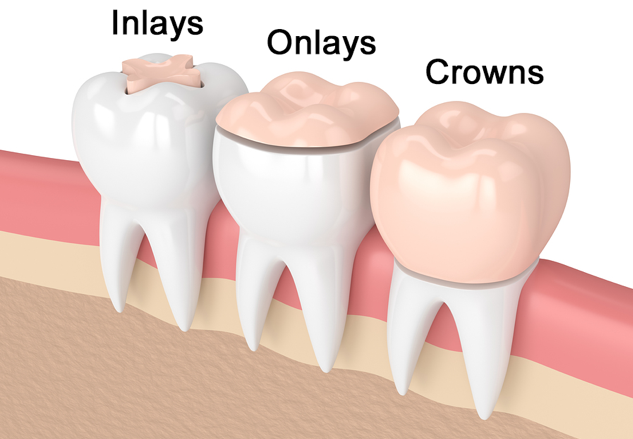
Inlay and Onlay
Inlays and onlays are regarded as ‘indirect’ fillings since they are fabricated outside a patient’s mouth before being bonded to a tooth. The procedures for inlay as well as onlay are same. Inlays can be made from a tooth-colored material like ceramic/porcelain or special dental composite. They are often used to remove unsightly ugly fillings which need to be replaced using tooth-colored inlays before bonding to the teeth.
Onlays can fit within the mouth, but often extend up to a back tooth’s chewing surface for supplanting one or more cusps. Earlier, they were made of gold, but these days most patients prefer opting for a tooth-colored inlay. Creating an onlay from ceramic and porcelain, allows the restoration to be bonded to a tooth. Such a bonding process can actually enhance the strength of the tooth.
When should you opt for inlays & onlays?
Dental inlays are prescribed by doctors when extra support is required which a dental filling can’t provide. In contrast to a crown, less tooth structure is removed. Therefore dental inlays are a more conventional restoration. Dental onlays offer more extensive coverage. So, they are often called ‘’partial crowns’’ and are the last option suggested by a dentist before a crown.
What type of treatments do we offer?
At Rapha Dental Centre, we prepare a patient’s tooth before starting off with the process of dental restoration process. Here are the steps we adapt to perform a treatment related to dental inlay/onlay
We remove any part of the teeth which has a bad structure using a dental drill.
A porcelain inlay or inlay is then created in the lab to fit within the newly created area.
We then reconstruct and restore the tooth using composite or amalgam which is molded and shaped inside the mouth.

